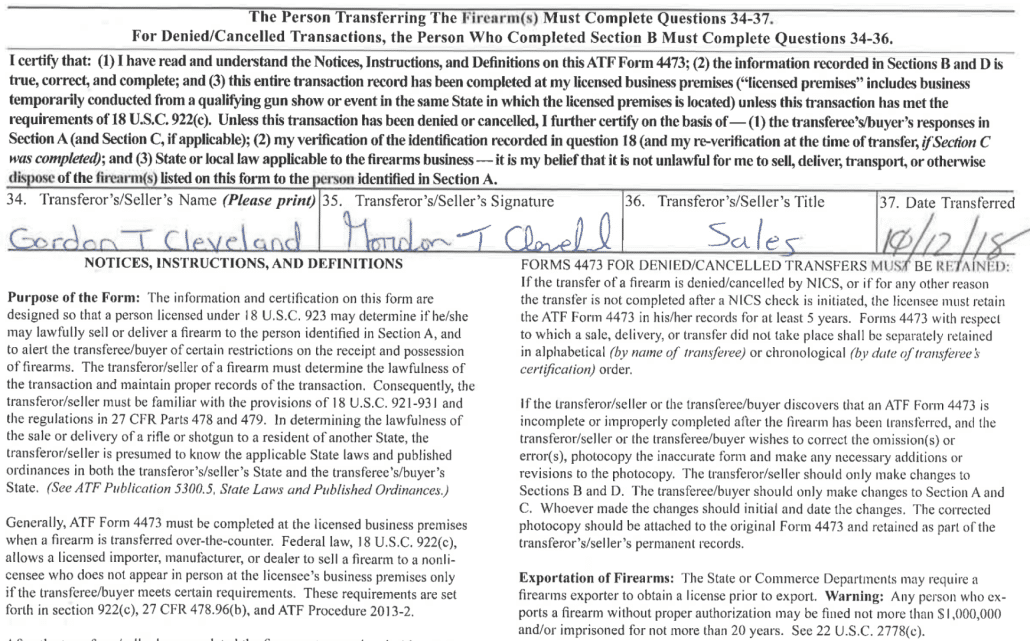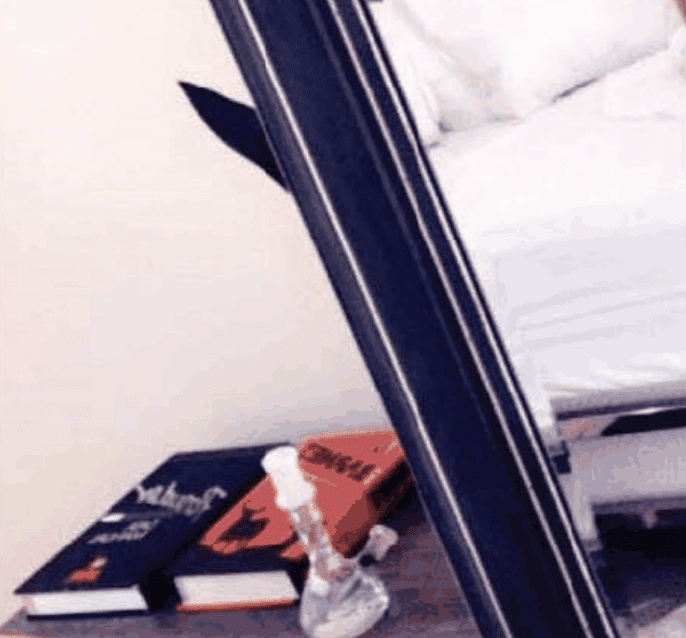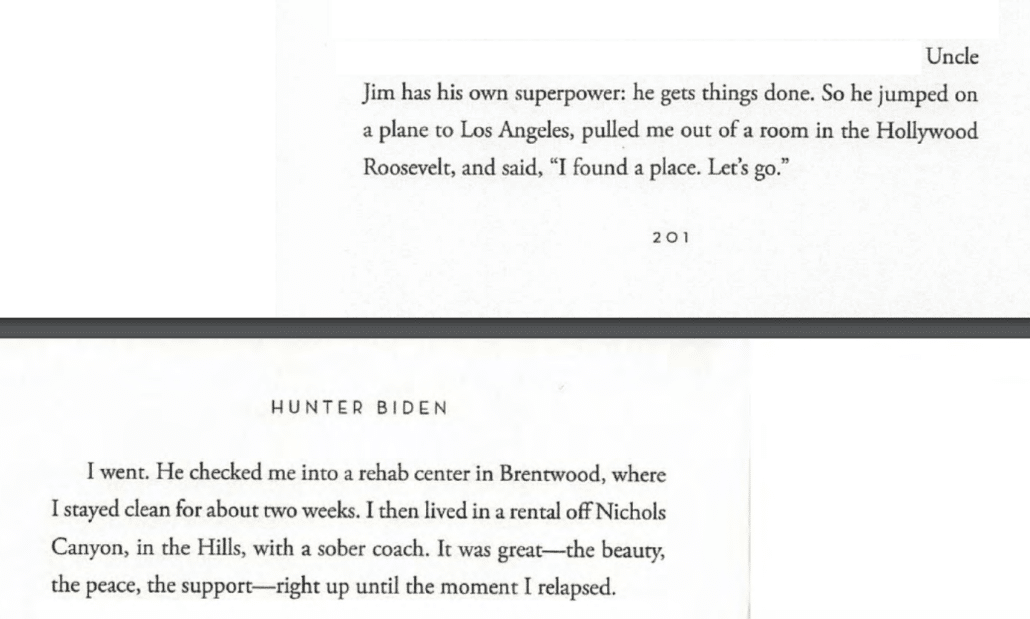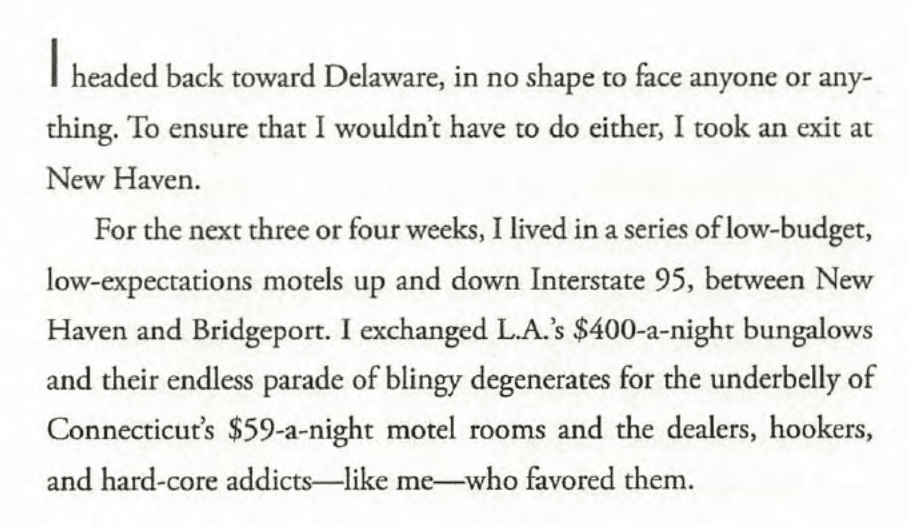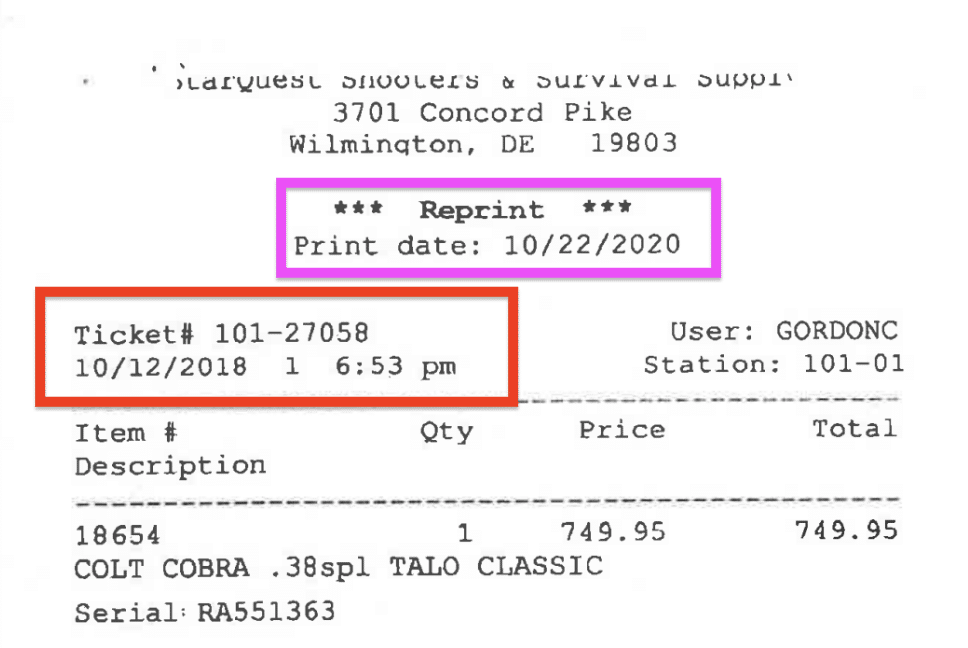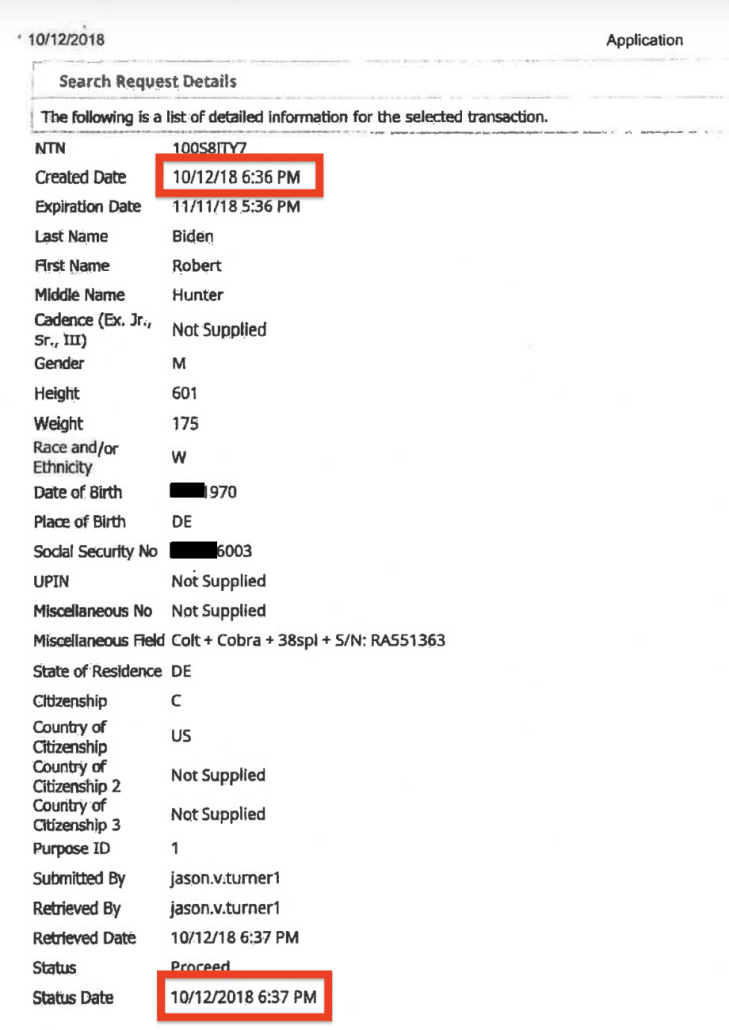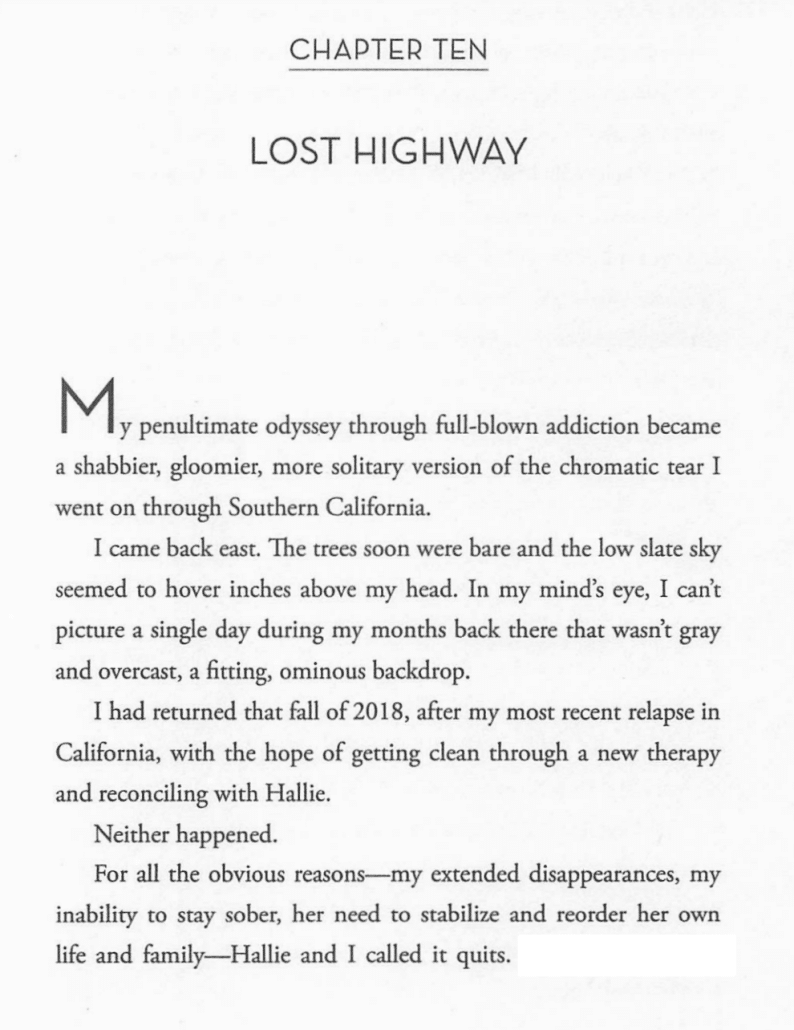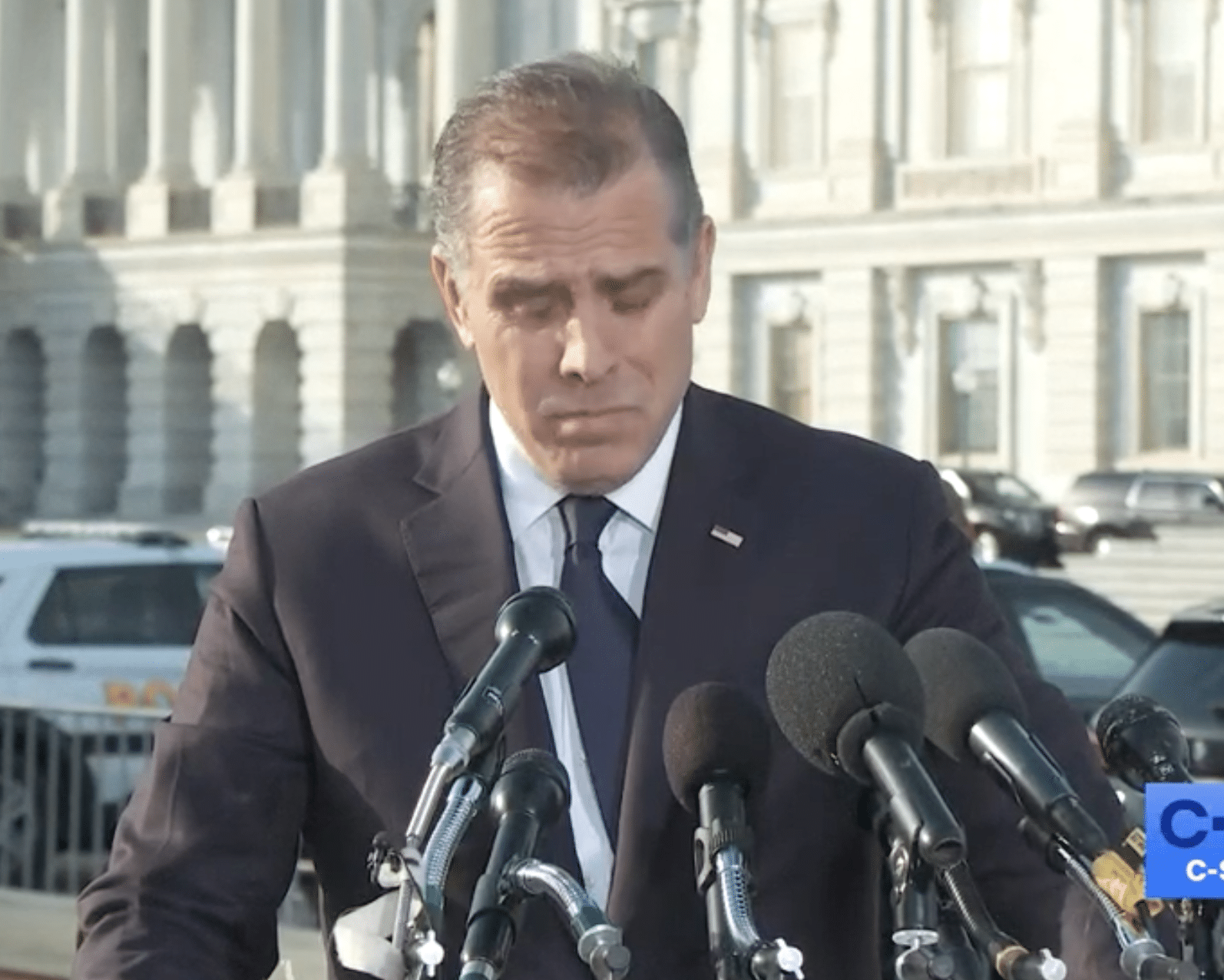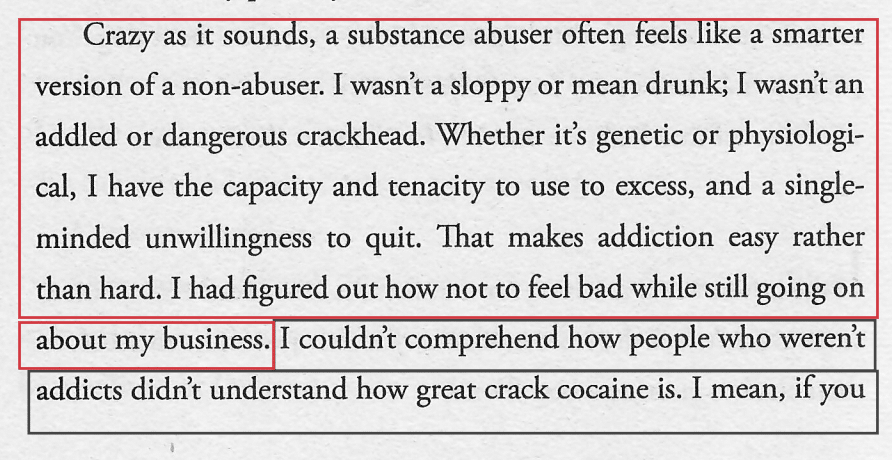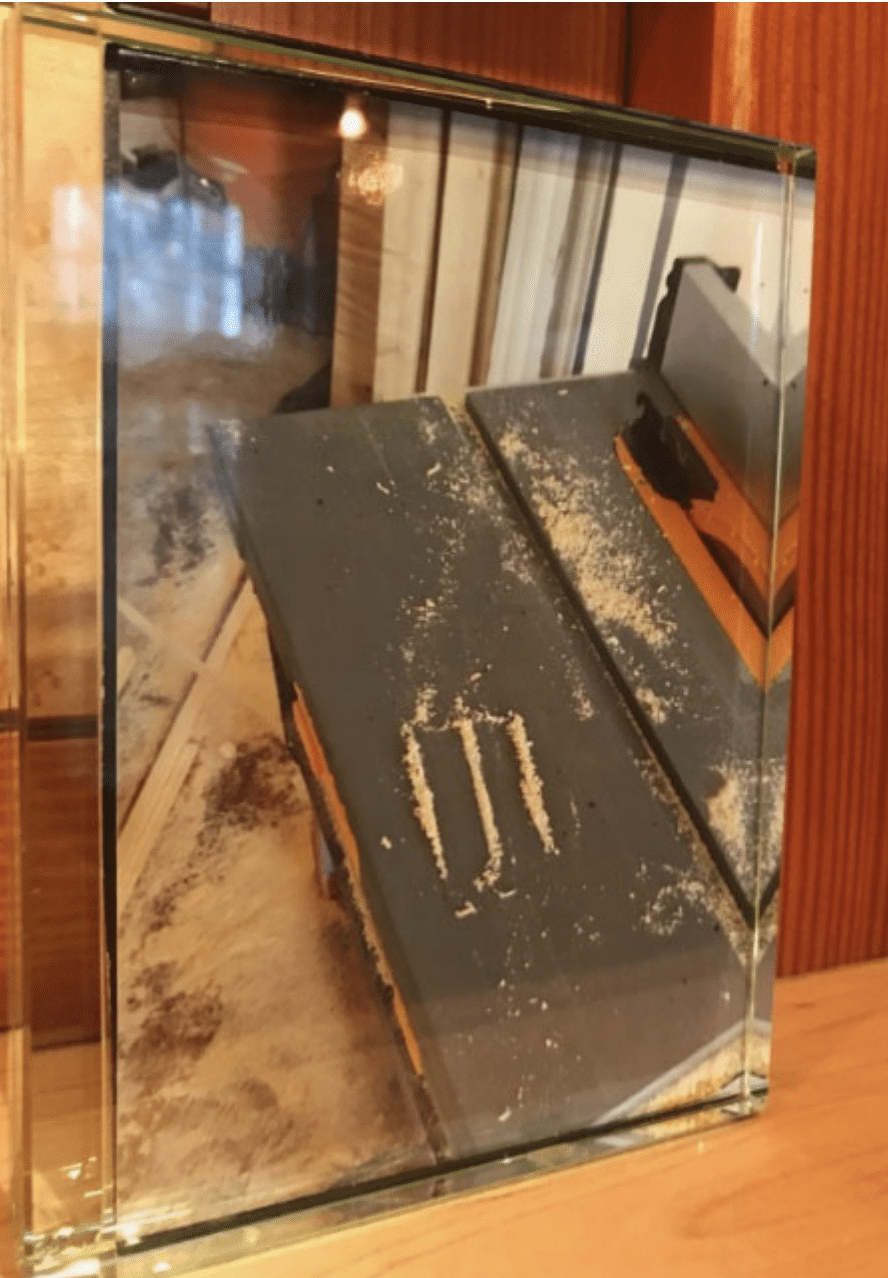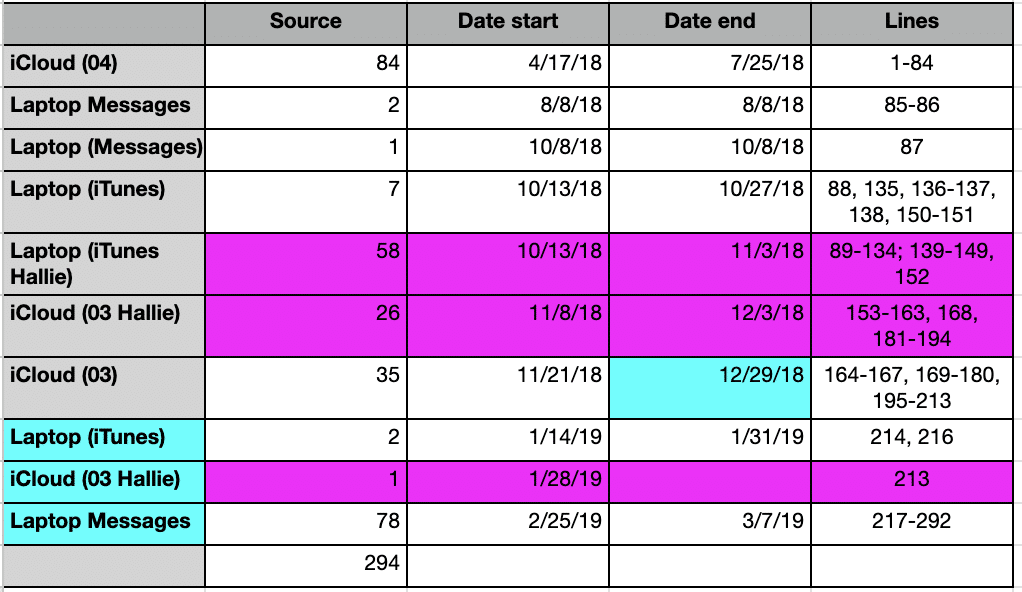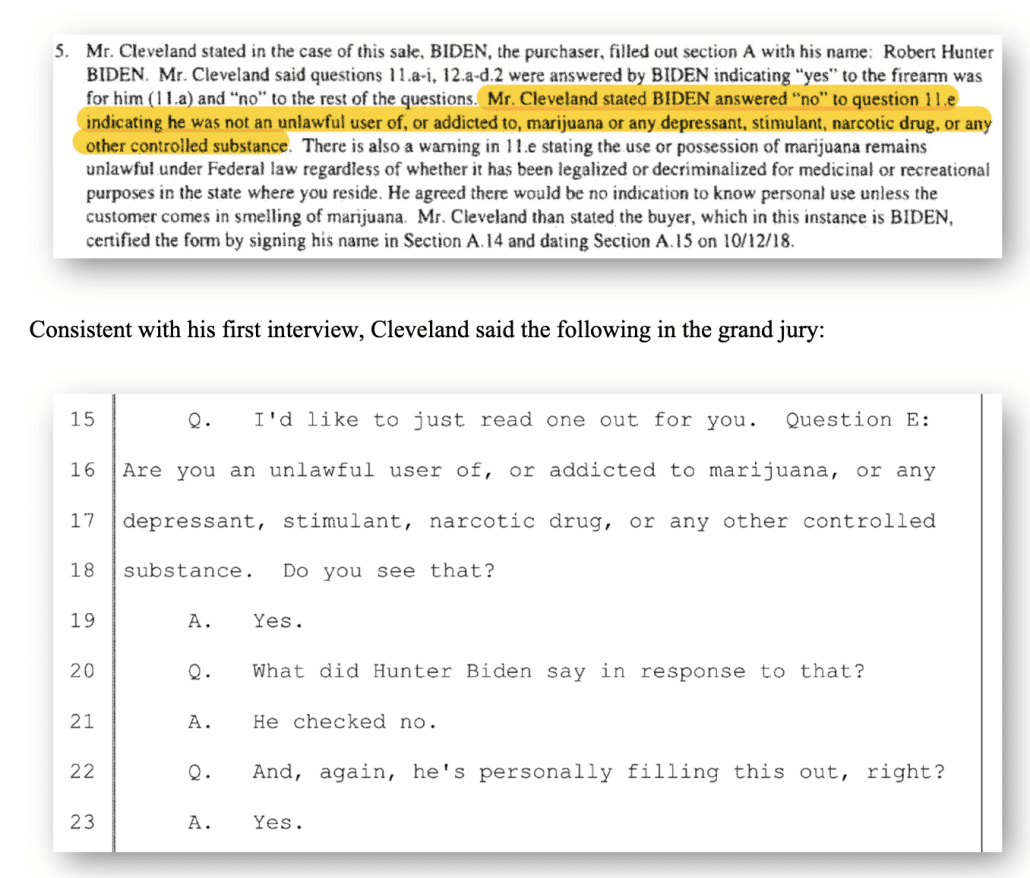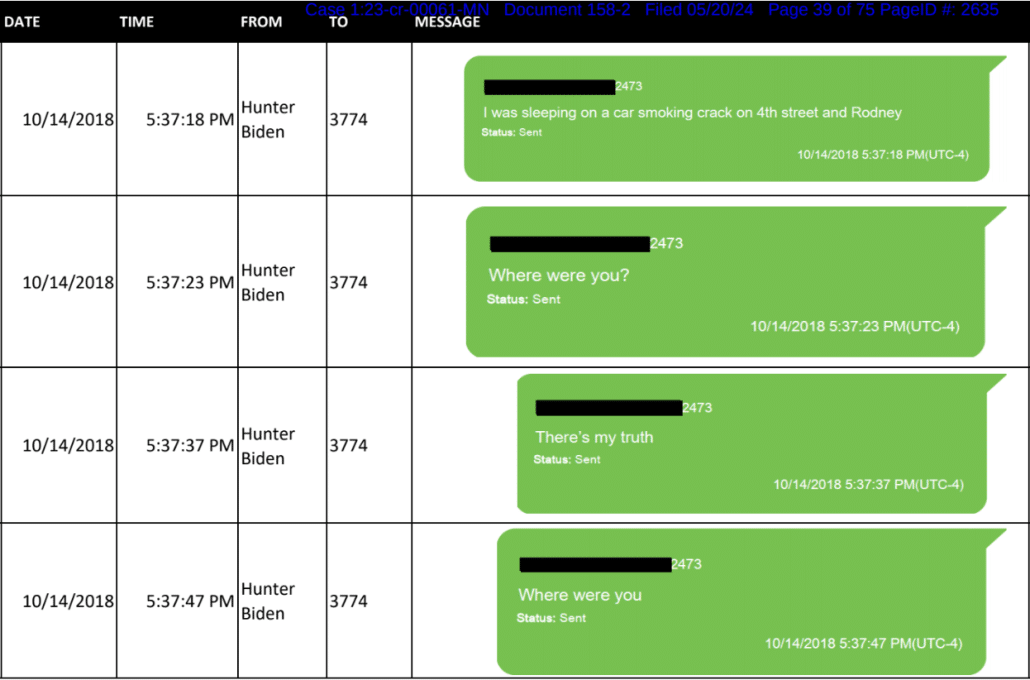Judge Noreika Risks Narrowing Hunter Biden’s Right to Confront His Accuser Even Further
Gordon Cleveland, the man who sold Hunter Biden a gun without seeing an ID with an address on it on October 12, 2018, did not finish testifying at the Hunter Biden trial yesterday. When Abbe Lowell started walking him through the penalties on the gun shop and the guy who signed the form selling the gun, Derek Hines made an objection, leading to a contentious sidebar and a decision to finish Lowell’s cross-examination today.
During the sidebar, Judge Maryellen Noreika seemed inclined to further limit Hunter Biden’s ability to impeach Cleveland’s testimony (though will revisit it this morning).
After having prohibited Hunter Biden from talking about the possible crime the gun shop committed to cover up their own violation of the rules, Judge Noreika told Abbe Lowell that she would not permit him to ask any questions about the penalties on the gun salesman for selling a gun without proper ID. She went so far as to insinuate that Abbe Lowell should have objected when Derek Hines opened the door to such questions, but helpfully offered to strike the testimony that impeaches the testimony of Hines’ key witness.
The question of why the gun shop sold Hunter a gun relying just on a passport goes to the core of a premise Cleveland laid out about how he sold guns: First he makes a customer fill out form 4473 to make sure the gun sale is legal, and only after that does he sell things like ammunition.
Q. Why is it important for you as a salesman?
A. It’s important because after you fill in your personal information, there is a series of questions that can ultimately void the sale before it even gets all the way started with running the background, depending on what the answers are on that form.
[snip]
Q. After the gun is explained to him, the speed loader explained to him, the bullets are explained to him, and he has all that, is that on the counter?
A. Yes.
Q. And that’s when you deal with the form?
A. The form — the form was — no, so you got the sequence messed up. The guns and all that stuff was — I mean the gun, the ammo, and the speed loader was on the counter, but that was after the fact that the background check was already ran.
Q. So before the background check was already done, where was the handgun?
A. The handgun was already on the counter.
Q. Where are the bullets?
A. The bullets are on the shelf because we haven’t even discussed them before the background check.
If he never got a second form of ID, then his narrative of how he does sales — a narrative that is at the core of his claim to have witnessed Hunter Biden fill out the form — is suspect.
Cleveland’s current timeline of what happened that day is:
- Hunter Biden picks a gun
- Cleveland hands Hunter Biden form 4473 to fill out as Hunter hands him his passport
- Cleveland leaves the front room to copy the passport which, he claims, takes less time to do than it does with a driver’s license because it is not double-sided
- Cleveland returns to the counter and watches Hunter as he fills out the gun form
- Only then does Cleveland take the passport — but not the form — in the back to ask whether he can use the passport
- He and Jason Turner return to the counter
- Turner reviews the form and sees that Hunter hasn’t signed it
- Turner then tells Hunter he needs to go get a second form of ID
- Turner goes back into the back room to run the background check
- Turner fills out the rest of the form — including dating Cleveland’s signature
- Cleveland proceeds to sell Hunter a bunch of other things, some of which he claims to have consulted on, some of which — a utility tool and a BB gun — he claims he did not (note, this may explain the 16 minutes that elapsed between the background check and the sale that I pointed out here)
To substantiate that he remained in the room while Hunter filled out the form, Cleveland said that he wouldn’t ask Turner to run a background check until he was sure the sale would be legal. But Turner ran the background check, without anyone recording receiving a second form of ID.
There are several reasons this goes to Cleveland’s credibility.
First, at least according to Abbe Lowell’s citations from a 302, in 2021 Cleveland told ATF Agent Hnat that his general practice is to get two forms of ID, but did not see a second form of ID from Hunter Biden.
Speaking of his general practice he said, “He then gathers the information provided by the customer for the background check, the customers two forms of identification . . .” (TAB 3, 10/12/21 ATF EF 3120 at 1, ¶2).
With specific reference to Biden, “He said he would provide the copy of the U.S. Passport and the firearm information on a sheet of paper to the person sending the background check in. Mr. Cleveland said he did not see the document with the ATF Form 4473 he was shown.” (TAB 3, 10/12/21 ATF EF 3120 at 2, ¶6) [Lowell’s italics, his bracketed comments omitted]
Since his representation that he generally gets two forms of ID but did not when he sold Hunter a gun appears inaccurate, it raises questions about whether the things he said yesterday that he did routinely — such as telling someone to answer the form truthfully — are true.
Q. Let’s go through each of those things you just said. You said he’s supposed to fill out the form truthfully?
A. Yes.
Q. You used those words truthfully?
A. Yes.
Q. Do you do that as a matter of practice?
A. Always.
Q. Why do you do that?
A. Because of the questions that are on the form.
Secondly, Cleveland’s sworn testimony yesterday is not entirely consistent with his testimony weeks ago, in a way that makes his signature on the form problematic, on precisely the issue to whic Hines raised an objection.
Last month, Cleveland said that after speaking to Jason Turner, he told Hunter that they would need to see a second form of ID.
When Biden presented his passport as identification, Cleveland went into the back and asked Ronald Palimere and Jason Turner if it could be used. Cleveland recalls going back out to Biden and saying something to the effect that if Biden was going to use a passport, they would need another form of identification.
Here’s what he said yesterday.
Q. Now, at this point, what happens next after you witnessed Mr. Biden filling out the entire page 1?
A. So, that’s when I went to go get clarity on the passport.
Q. When you say get clarity, why did you get clarity on the passport?
A. I figured it was all right, I just needed to double-check because it was my first time using a passport, and I know like as far as with the ID’s, it’s a form of ID, you’re able to use that for a lot of different things.
Derek Hines then coached Cleveland to say that he had been told it was okay to sell a gun relying on the passport.
Q. Did you have a discussion with them?
A. Yes. I said I think the passport is okay, just double-checking.
Q. Let me stop you there. So you had a discussion with them because you had a question about passport, correct?
A. Yes.
Q. Now, at that point did you go — end up going back to the sales floor after your question had been answered?
A. Yeah.
Q. To your satisfaction?
A. Yep, I went right back to the sales floor.
Q. And what did you believe you could do at that point in the transaction?
A. You could take the passport, I was told.
Only after describing directing Hunter to sign the form (which is on the second page and, if accurate, undercuts Abbe Lowell’s claim that Hunter might have referred to the definitions in the back), as Cleveland describes, did Turner purportedly tell Hunter to go get a second form of ID.
Q. What happens next after you see Mr. Biden sign the form and date it?
A. What happened next is Jason said also we would need for the passport, another form of like identification stating his address, it could be a bill, or it could be a vehicle registration.
Q. What’s the next thing you observe?
A. I observe Mr. Biden leave out and then come back in.
Cleveland never saw a second form of ID, but nevertheless signed a form saying the “information recorded in Sections B and D is true, correct, and complete” and attesting to “my verification of the identification recorded in question 18.”
It was this section that Lowell was asking Cleveland if he had read when Hines objected, which is material not only for Cleveland’s credibility, but for a retention aspect of one of the charges.
Lowell had not yet elicited Cleveland’s testimony from a few weeks ago, in which he said,
Cleveland would not have paid attention to the paperwork side of the sale because he had already done his part by working with the customer and making the sale.
The comment undercuts Cleveland’s claim to have watched Hunter closely as he filled out the form. And it undercuts Cleveland’s description, yesterday, of walking Hunter through the difference between ammunition types and speed-loaders, parts of the sale which he describes taking place after the paperwork was done.
Here’s how the objection and sidebar went in — with Derek Hines making a desperate bid to force Lowell to finish his cross-examination in 15 minutes so as to prevent him from having the evening to review the testimony of Hines’ single witness to two alleged crimes charged against Hunter Biden.
LOWELL. On page 3, if you’ll go up above, I’m sorry, on page 3, go back down a little bit. On the right side of the column, the second paragraph, it reads, if the transfer/seller, that would be StarQuest, right?
A. Yes.
Q. Or the buyer discovers that a form is incomplete or improperly completed after the firearm has been transferred —
MR. HINES: I object, Your Honor.
THE COURT: All right. Let’s have a side-bar. (Side-bar discussion:)
MR. HINES: So the objection is not only it is outside the scope of direct, it is irrelevant what StarQuest did years later, with the form, and he’s driving towards that, it has no relevancy to whether or not Mr. Biden filled out the form.
THE COURT: Should I let the jury go for tonight?
MR. LOWELL: No, it’s a good time to let them go. Can I respond?
THE COURT: How much more do you have?
MR. LOWELL: For him, quite a lot.
THE COURT: Okay. All right.
MR. LOWELL: Well, I’m sorry, that’s stupid, I apologize.
Hines realizes that Lowell is about to have the night to review other problems with Cleveland’s testimony, and he tries to assert Cleveland’s right to go to work over Hunter’s Sixth Amendment rights.
MR. HINES: He drives a trash truck, he’s away from work.
MR. LOWELL: It won’t be over by 4:30 or even 4:45, and I’m — well, do you want to talk about this in open court before, or how do you want to do this?
THE COURT: I mean, if’s he not going to finish, are you going to finish by 5:00.
MR. LOWELL: Maybe, I don’t know how long it will take. I don’t want —
THE COURT: I’m just sensitive to the fact that he’s missing his work.
MR. LOWELL: Can I see how far — let me respond to his objection.
THE COURT: Yes.
When Lowell explains he should have the right to put it into the record that, having been told a second form of ID was necessary, Cleveland did not insist on seeing one but signed the form anyway, Noreika suggests that Lowell should have objected when Cleveland testified to something that puts his own credibility at issue. She offers to strike the testimony that makes Cleveland’s disinterest in completing documentation clear!
MR. LOWELL: I am not asking something you did years later, not doing that. I am indicating because he opened the door when he said something about somebody getting a second car registration or second form of identification, he said that, I didn’t, and so consequently, I need to ask him what that was.
THE COURT: No. You’re not putting that in. I ruled on that. I don’t think that he opened the door. You didn’t object or I guess, if you want me to strike what he said on that, I will consider it, but we’re not opening the door on that. [my emphasis]
Lowell tries again.
MR. LOWELL: So I cannot ask him, then, was a second form of identification given to him that moment.
THE COURT: At that moment. Why can’t they ask at that moment.
Hines says that because Cleveland doesn’t know whether Turner saw a second form of ID before signing a form that required one, he should not have to testify to that fact.
MR. HINES: He has no basis, he doesn’t know.
MR. LOWELL: To him.
THE COURT: You can say at that moment.
MR. LOWELL: Okay.
THE COURT: But if he misunderstands your question and starts talking about something later, we’re going to cut him off.
MR. LOWELL: Okay.
Noreika tries to resume testimony.
THE COURT: Members of the jury, we’re going to hopefully — (Sidebar discussion:)
MR. LOWELL: I want to be very fair to Mr. Cleveland, but to be fair to the jury, I don’t think I would finish by 5 o’clock. And I want to say that so that I don’t mislead and have them wait around. I’m sorry about him, I didn’t know the time, how long anything would take today. But I’m looking at my outline for the things that you’re lug me to ask and I won’t be done in that period of time.
Hines opines that Hunter Biden’s attorney should not have any more questions for the only witness to two of the charged crimes.
MR. HINES: I don’t know what else is relevant of this witness. We just did a tour of StarQuest.
MR. LOWELL: Why is that not relevant to find out where he was?
Having spent hours with a witness, Zoe Kestan, who introduced a slew of pictures of drug paraphernalia but who had no idea what Hunter was up to during the period of the charged crimes, Hines then whined that Lowell established the organization of the store in a way that may be inconsistent with Cleveland’s testimony. Noreika begins to relent.
MR. HINES: Well, you have taken more than thirty minutes —
THE COURT: I’m not going to cut him off from asking fair questions of the witness. So hopefully Mr. Cleveland won’t have to miss too much work tomorrow.
MR. LOWELL: I’m promise I’ll cut it down based on what you said. I’m being honest with you and you and you, it won’t be over and I know the jury will be here longer. I’m sorry, can I also say I’m trying, but at the same time, you shouldn’t criticize me for how long — you’re taking time on things you could have done shorter as well.
THE COURT: If he’s not going to finish, then why I am going to keep everybody here for a half hour?
Leo Wise insists he knows better than Abbe Lowell about how many questions Abbe Lowell has yet to ask the sole witness to two charged crimes.
MR. WISE: I think he’s going to run out. It’s hard to imagine —
THE COURT: Keep going. I have a lot of faith in Mr. Lowell that he’s not going to run out of things. I do.
MR. WISE: I have less faith.
Lowell notes that forcing him to keep the jury late is going to make them pissed at him.
MR. LOWELL: So I am suggesting, you tell me, I don’t know, this could go for another hour, I’m not saying it will, but I don’t want to invoke the wrath of the jury who has been told at the end of the day it’s 4:30. I think this fairest thing to do is for me to stop. I will go back to my outline and make it as short as possible — I can’t do that now — to save time.
Ultimately, Lowell gets the time to review his questions and streamline.
I feel for Cleveland. He dropped this second job because of health concerns in 2021, even though he was obviously very passionate about the job. Meanwhile, the gun shop totally fucked him over, making him sign a form validating a gun sale without first including the requisite information.
The statutes of limitation have expired on that sale, but thanks to Derek Hines’ obstinance about protecting gun shop owner Ron Palimere, Cleveland’s at risk of missing more than his job today.


